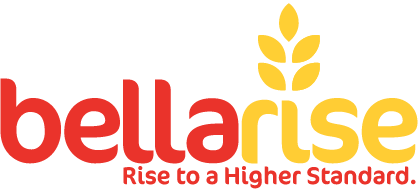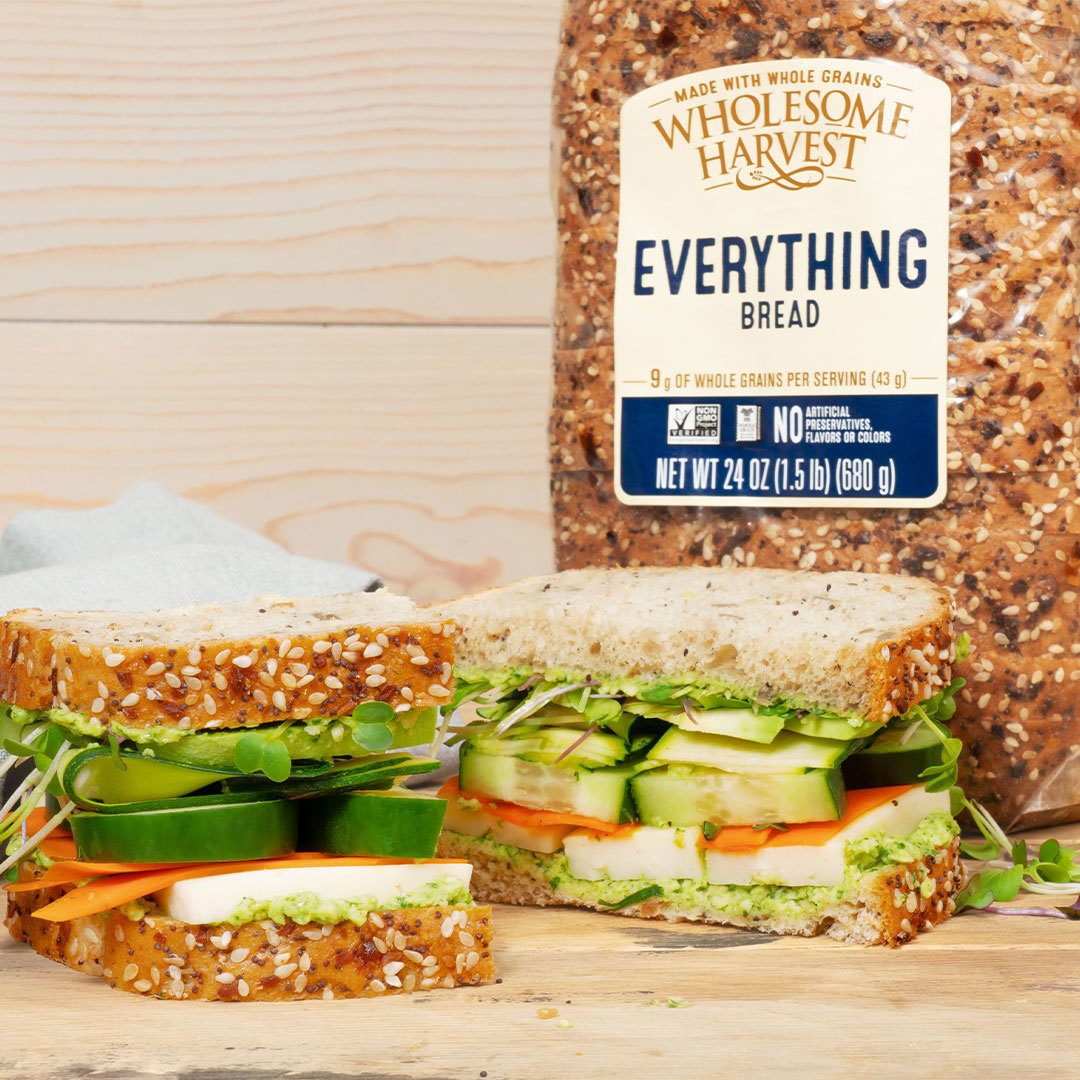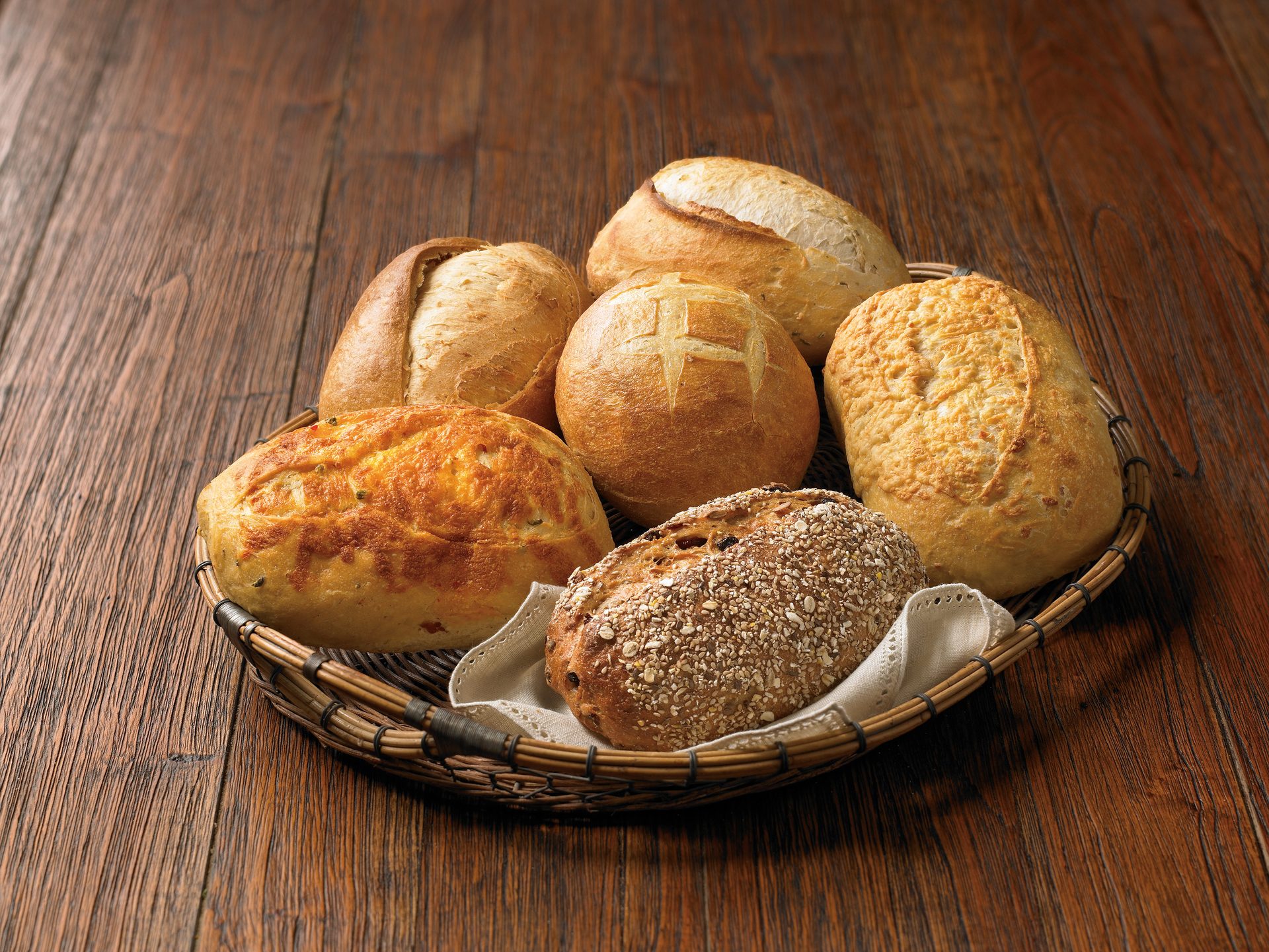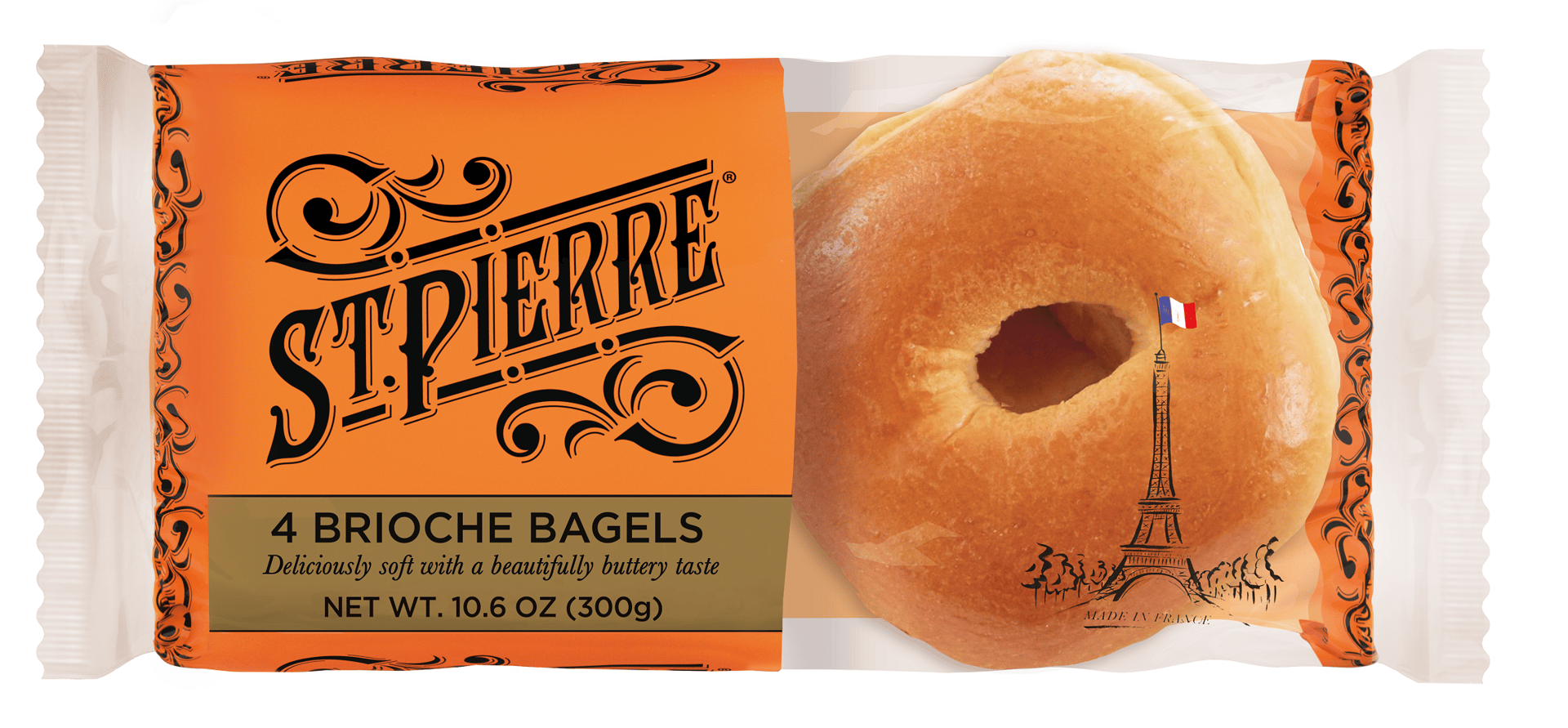The BOTTOM LINE
- Better-for-you options still gaining
- Elevated sandwich momentum
- Advent of the brioche bagel
Finding avenues for growth
Sandwich bread and English muffin segments stabilize while bagels continue generating strong sales gains.
Douglas J. Peckenpaugh, Group Editorial Director
The fresh bread category—comprising sandwich breads, bagels, and English muffins—currently accounts for over $14.3 billion in annual retail sales according to IRI, Chicago. Innovation in better-for-you and elevated options is driving growth across select segments, with bagels seeing particularly strong sales over the past year.
Bread
STATE of the INDUSTRY

SPONSORED BY
Market data
According to IRI, for the 52 weeks ending March 20, 2022, the primary segment of fresh bread, center store breads, remained flat at $8.5 billion in sales. Of the top 10 companies in the segment, Lewis Bakeries, which has pioneered the smaller half-loaf product format, saw the most growth, up 15.3% to $250.6 million in dollar sales.

Source: IRI, Chicago, Total U.S. Multi-Outlet w/ C-Store (Supermarkets, Drugstores, Mass Market Retailers, Gas/C-Stores, Military Commissaries and Select Club & Dollar Retail Chains), Latest 52 Weeks Ending April 18, 2021.
PINCH TO ZOOM IN ON CHART


HOVER OVER CHART TO SCROLL DOWN
Source: IRI Market Advantage, Integrated Fresh, Total U.S. - Multi Outlet w/ C-Store (Grocery, Drug, Mass Market, Convenience, Military and Select Club & Dollar Retailers), 52 Weeks Ending 03-20-22
Perimeter breads fared slightly better in terms of growth, up 1.1% to $1.4 billion. Crusty/meal bread saw the most growth within the segment, up 2.1% to $641.8 million. In perimeter sandwich bread, which saw sales drop slightly by 0.6% to $610.2 million, Grupo Bimbo saw 11.9% growth.
Frozen fresh baked bread products grew 2.1% to $1.0 billion. New York Bakery—a T. Marzetti brand specializing in frozen garlic bread—leads that segment, growing 7.7% to $279.3 million.
Bagels saw the highest level of growth for the year. According to IRI, center store bagels grew 4.4% to $1.3 billion. Grupo Bimbo maintains significant 65% share of the segment, with growth of 3.6% to $832.0 million for the year. Flowers Foods also saw its bagels resonating with shoppers, with center store bagel sales up 16.9% for the company, hitting $123.4 million in sales.
Perimeter bagel products saw even greater traction in retail, up 17.6% to $254.9 million. Private label far and away leads the segment, but George Weston is increasing its share of the segment.
Center store plain English muffins dropped off slightly, down 3.0% to $791.8 million in retail sales, per IRI. Bright spots included growth from Flowers Foods, up 18.8% to $11.9 million, and H&S Bakery, up 61.6% to $5.9 million.
Center store health/wellness English muffins likewise saw sales drop, down 1.1% to $170.8 million. Flowers Foods saw the most growth in the segment, up 29.9% to $16.5 million.
Refrigerated English muffins saw considerably better traction with shoppers for the year. The segment grew 10.7% to $93.9 million. Bays—a Grupo Bimbo brand—dominates the segment with 95% dollar share. The brand saw sales grow 13.0% to $89.2 million for the year.
Looking back
Fresh bread means sandwiches, one of the top meal formats across America. At-home sandwich creation trended forward during the increased at-home dining during the pandemic, and are a staple across most levels of foodservice.
According to Heather Davis, senior manager of customer insights, Bimbo Bakehouse, Horsham, PA, sandwiches today present opportunities to showcase new or elevated flavors. “Sandwiches are one of the most-common menu items, and are found on 73 percent of menus according to Datassential, so operators tend to blend familiar favorites with innovative flavors. We’ve also seen foodservice businesses tap into upscale ingredients to help differentiate sandwiches on the menu.”
Offering the right fresh bread carrier for those inspired sandwich presentations can resonate with consumers. “We’ve seen operators introduce globally inspired sandwiches, like tortas, or Cuban sandwiches,” says Davis. “In 2021, Datassential reported that Cuban sandwiches saw growth on fast-casual restaurant menus. Bakehouse’s newly launched Cuban Bread features a crisp crust, soft texture, and signature score down the middle to achieve the authentic taste foodservice operators expect with the traditional Cuban sandwich. This specialty bread works great for tortas, as well.”
Davis notes thaw-and-serve items that deliver on flexibility help ensure operators can keep up with customer demand and help with overall inventory management.
In retail, perimeter breads, including in the in-store bakery (ISB), saw particular traction with shoppers over the past year. According to Beth Sharkey, senior marketing manager, Bimbo Bakehouse, a key factor in attracting shopper attention is a focus on taste and wellness.
“Sandwiches are one of the most-common menu items, and are found on 73 percent of menus according to Datassential, so operators tend to blend familiar favorites with innovative flavors.”
— Heather Davis, senior manager of customer insights, Bimbo Bakehouse


“When it comes to the ISB, consumers are most interested in bread products that are freshly made and contain all-natural, healthy ingredients like whole grains, according to Mintel,” says Sharkey. “Datassential reported that in just the past year, everything bagel seasoning has grown on menus over 67 percent. Bimbo Bakehouse launched a new offering under its Wholesome Harvest® brand called the Wholesome Harvest Everything Bread. It’s full of delicious fresh flavor, made with nutritious whole grains, and is sure to elevate any toast or sandwich.”
We’re still seeking comfort, too, notes Dhriti Batra, category marketing manager, Bimbo Bakehouse. “The pandemic triggered consumers’ need for nostalgic, comforting foods and a resurgence of beloved products,” she says. “Sourdough, an ISB favorite, particularly benefited from this trend. Goldminer, a member of Bimbo Bakehouse’s brand portfolio, revamped a classic by adding a new delicate, yet tangy, flavor to its sourdough line. It’s made with a traditional sourdough starter and slow-crafted for 24 hours.”
Courtesy of Bimbo Bakehouse
Scott Rosenberg, director of marketing, Lantmännen Unibake USA, Inc., Lisle, IL, calls sustainability a “consumer mega-trend,” noting that sustainability continues to factor more into new product innovation. He sees sustainability as a perfect fit for both better-for-you products and better-for-the-earth products. “Being owned by farmers, Lantmännen Unibake is concerned about food waste,” he says.
“To that end we are re-launching two demi loaves: Euro-Bake Sourdough Demi Boule and Euro-Bake Three Cheese Asiago Demi Loaf, which allow smaller households to buy a loaf of artisan bread without worrying about food waste.”

Courtesy of Lantmannen Unibake
Bagel sales were a highlight in fresh bread over the past year, and new product innovation—such as the new St Pierre Brioche Bagels—will help continue that trend. “In October 2021, we launched brand-new product to market, allowing retailers to capitalize on the growth of two emerging categories,” says Paul Baker, founder, St Pierre Bakery, Manchester, England. “The bagel category is worth $1.5 billion across America, whilst brioche as a category is growing at 33%, totaling $327 million to August 2021. Our St Pierre Brioche Bagels bring together Parisian flair and a New York classic, offering retailers something truly unique to drive innovation into the bakery category.”
The pandemic changed the way American shoppers eat, notes Baker. “With people spending more time at home, meals like breakfast became more-important occasions. Instead of rushing to eat something and get on with the day, consumers started to explore and enjoy more-elaborate breakfast dishes. Generally speaking, sales of versatile bakery products increased—and brioche ticks that box, with recipe inspiration for breakfast, lunch, and dinner,” he says. “The growth in the brioche sector is testament to this trend of elevating everyday meals, using more premium offerings.”
Baker notes bagels offer daypart flexibility, with appeal at breakfast, brunch, and lunch. “As the first brioche bagel to market, it also offers inspiration to shoppers looking for new and exciting eating occasions in the bakery aisle,” he says.

Courtesy of St Pierre Bakery
“We’ve spent the past eight years educating shoppers on how to use brioche and working with retailers to encourage shoppers to try something new,” says Baker. “As a result, more than a third of American shoppers are now choosing brioche every time they shop. St Pierre products are designed to ‘elevate the everyday.’ In upgrading a bakery staple like the bagel, we are allowing consumers to do just that.”
Baker notes that before the pandemic, the total bagel market was worth $1.0 billion. At the end of 2019, the market had seen 2.3% year-over-year growth. “After more than 12 months of working from home and COVID-19 restrictions, the once-humble midweek breakfast and lunchtime meal occasions have grown substantially—and with them, the popularity of bagels,” he says.
Baker notes that St Pierre research revealed that four out of five existing brioche buyers would purchase Brioche Bagels, and 91 percent would eat them for breakfast. “However, according to a nationwide online survey conducted by The Harris Poll and commissioned by General Mills Foodservice in 2021, consumers are eating more breakfast foods than since the pandemic—and not just in the morning hours.” Findings include that nearly a quarter of Americans (24 percent) report eating more breakfast foods, and four in five Americans (79 percent) say they have eaten breakfast foods outside of the traditional breakfast meal in the past year.
Looking forward
While the ISB offers unique merchandising opportunities around freshness perceptions, convenience still factors into purchase decisions, says Brandi Unchester, ISB marketing director, Bimbo Bakehouse. “During the pandemic, interest in scratch baking surged,” she says. “As consumers’ lives get back to normal, they are seeking the fresh-baked experience they love with the added benefit of ease. Bakehouse offers take-and-bake solutions, which are baked 95 percent and sold oven-ready to shoppers who can purchase and finish making in the comfort of their own kitchen.”
The ISB also offers shoppers opportunities for product discovery. “Consumers want to experience the thrill of discovery that meets their evolving needs in ISB,” continues Unchester. “These new products take bread items that are already loved by many and bring them to the next level. Revamping staple bakery items helps to add an exciting, fresh touch to current ISB offerings. We see this with our Wholesome Harvest bread, which is already a nutritious loaf full of whole grains. Adding the Everything Bread seasoning gave it an all-new taste and look that existing and new customers will be excited to try.”
2Perimeter bread presents premium opportunities to curious shoppers looking to elevate their at-home eating experiences. “Both the center store bakery and perimeter bakery are seeing dollar growth year-on-year, but what’s key is that the perimeter is also growing in volume by 3 percent, whilst center store volume growth is static at zero,” says Baker (Nielsen, extended all outlet combined/XAOC, 52 weeks ending January 29, 2022). “The trend for premiumization that emerged through the pandemic is here to stay, and there is a natural tendency for shoppers to look for ‘bakery upgrades’ in the perimeter.”
This shopping pattern provides an opportunity for the year ahead, suggests Baker, with retailers able to look at where growth is coming from and merchandise accordingly. “Innovative displays can provide trip triggers and impact the route of footfall to increase basket spend, but also offer inspiration to demonstrate the versatility of different products, which is another key shopper demand that emerged in the past 24 months and will continue to impact shopper behavior for some time yet,” he says.
“I think the key for the deli and ISB in the year ahead is about providing the experience—rather than just the function,” says Baker. “For shoppers, it’s emotional more than practical, and that’s why it carries such great opportunities for retailers to drive impulse purchase, away from the grocery aisle and vitally, bring footfall back in the wake of the pandemic.” SF&WB




